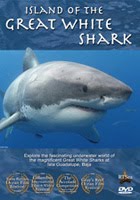Anti-Shark Netting for Aquaculture
Sharks were recently in Las Vegas, and I don't mean the card shark kind. At a major aquaculture conference, a new proprietary shark-resistant netting was introduced which holds great promise in helping open-ocean aquaculture protect its harvest from curious sharks.
 Open-ocean aquaculture primarily involves large pens that float at the surface and are big enough to allow species such as tuna reach a commercially-viable size. However, corralling fish together means that they will become a magnet for ocean predators like sharks, and previous netting material has not always done the job in resisting a hungry shark.
Open-ocean aquaculture primarily involves large pens that float at the surface and are big enough to allow species such as tuna reach a commercially-viable size. However, corralling fish together means that they will become a magnet for ocean predators like sharks, and previous netting material has not always done the job in resisting a hungry shark.Working together, NET Systems and DSM Dyneema have developed PREDATOR-X, a netting that combines high-strength polyethylene fibers with stainless steel wire. It was field tested in the Bahamas by scientists from the Cape Eleuthera Institute, using the institute's aquaculture facility for full-grown cobia as the test guinea pig.
The results were positive. While the netting is able to withstand the abrasions and cutting of ocean predators, it is also lighter than other netting materials and allows for sufficient water flow which is important to aquaculture in maintaining a healthy level of oxygen for the fish.
Many times I have seen the tuna pens floating offshore off the Baja, Mexico coast and would wonder how many sharks died at the hands of armed aquaculture farmers protecting their stock. Now, perhaps both sharks and farmed fish will be able to coexist, saving a few sharks and some wild fish from commercial fishing in the process.
Neurotoxin Found in Shark Fins
A new study, released by Neil Hammerschlag of the University of Miami's R.J. Dunlap Marine Conservation Program and members of the Miller School of Medicine, has found potentially harmful levels of BMAA, a neurotoxin, in shark fins and related shark cartilage products from seven species of sharks in Florida. BMAA is associated with degenerative brain diseases such as Lou Gehrig's, Alzheimer's and Parkinson's.
 Similar to other pollutants such as methylmercury that have been found in sharks and other large predators, the neurotoxin accumulation is a result of what is called biomagnification, a process whereby trace elements work their way up the predator-prey food chain. And as they do, their concentration levels increase. BMAA is found in cyanobacteria, an ocean bacteria, and from those humble beginnings it can move up through the various animals that feed on the bacteria and then preyed upon by others animals.
Similar to other pollutants such as methylmercury that have been found in sharks and other large predators, the neurotoxin accumulation is a result of what is called biomagnification, a process whereby trace elements work their way up the predator-prey food chain. And as they do, their concentration levels increase. BMAA is found in cyanobacteria, an ocean bacteria, and from those humble beginnings it can move up through the various animals that feed on the bacteria and then preyed upon by others animals."The thing is very little has been done on BMAA because it is a new wave, a new understanding," says Hammerschlag. "We're only starting to understand the scope of the problem."
Given the documented evidence of biomagnification regarding other pollutants found in sharks and fish like tuna, the presence of BMAA does not come as a stretch of the imagination but you can expect pro-shark fishing industry forces to refute the findings as a scare tactic conjured up by anti-shark fishing advocates. One wonders who is the most scared by this development, those who consume shark products or those who are in the business of plundering one of the ocean's most vital inhabitants.
Source (Netting): Market Watch
Source (Neurotoxins): Miami New Times

















No comments:
Post a Comment